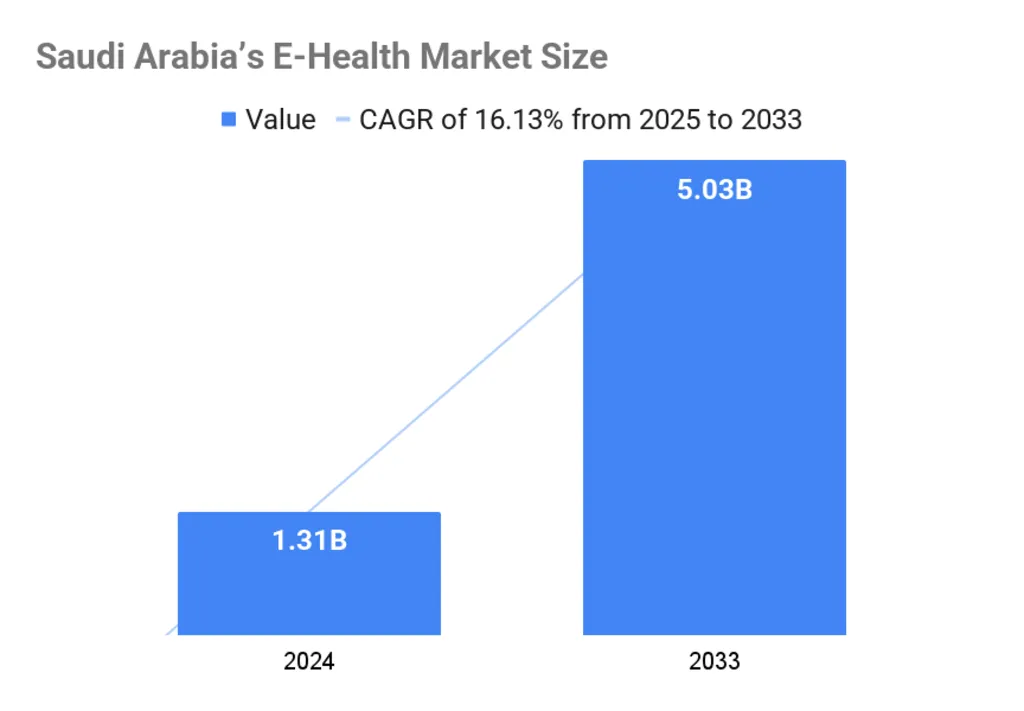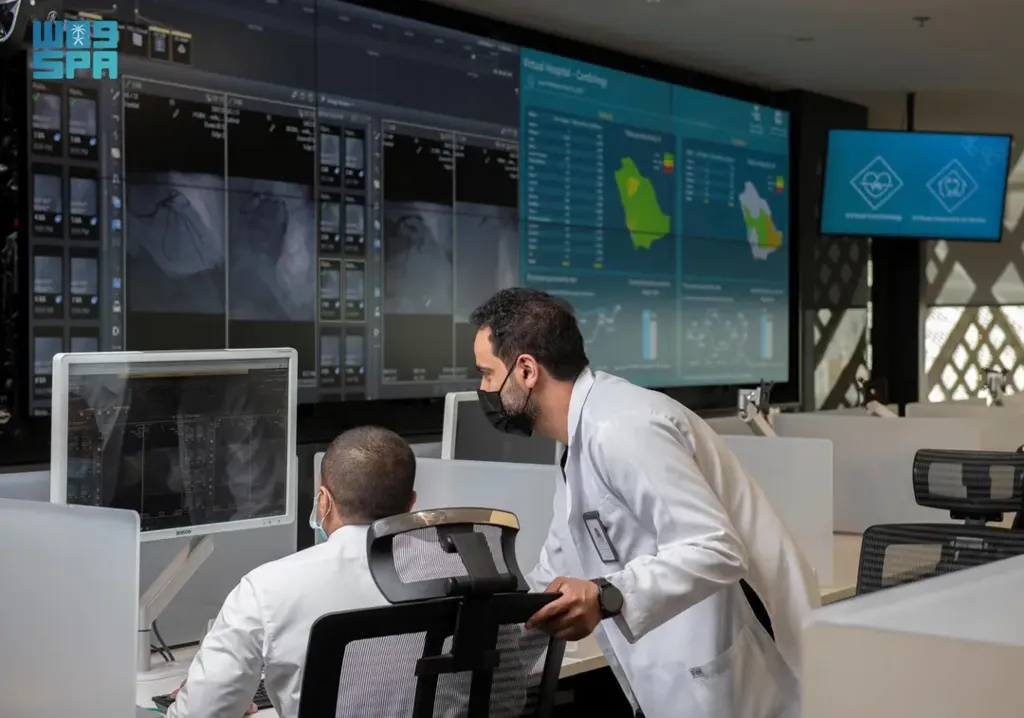Overview of Healthcare Digitalization: $1.31B Market, 16.13% CAGR
Saudi Arabia’s healthcare system is digitizing at warp speed. Under the banner of Saudi Digital Health Expansion, the market hit USD 1.31 billion in 2024 and is on track to soar to USD 5.03 billion by 2033, riding a 16.13% CAGR. This surge is fueled by Vision 2030’s mandate to modernize healthcare delivery, improve access, and reduce systemic inefficiencies.

Key initiatives include the rollout of electronic health records (EHRs), cloud-based platforms, and Health Information Exchanges (HIEs). These systems are designed to unify patient data across 290 hospitals and 2,300 health institutions, enabling real-time decision-making and reducing duplication of services.
Telemedicine and AI Adoption: Seha Virtual Hospital Connects 224 Facilities
Telemedicine has become a cornerstone of the Saudi Digital Health Expansion, with Seha Virtual Hospital now the world’s largest virtual care platform, connecting 224 hospitals nationwide. Virtual consultations, Tele-ICU services, and AI-powered diagnostics are now standard offerings, especially in remote regions.
AI is transforming diagnostics and treatment planning. Algorithms are used for radiology, oncology, and predictive analytics, helping clinicians detect diseases earlier and tailor interventions. The Ministry of Health has launched regulatory sandboxes to fast-track AI integration, while SDAIA supports ethical AI deployment across public systems4.
Remote patient monitoring via IoMT devices is also expanding, allowing continuous tracking of vitals and chronic conditions. These tools are reducing hospital admissions and improving long-term outcomes.
Investment Opportunities: $1.5B in Digital Health, $65B in Infrastructure
Saudi Arabia has invested over USD 1.5 billion in digital health technologies such as telemedicine, EHRs, and mobile health platforms. Additionally, over USD 65 billion is earmarked for healthcare infrastructure upgrades under Vision 2030.
Private equity and global investors are targeting specialty clinics, AI startups, and mobile health platforms. Gulf Islamic Investments recently acquired a USD 530 million stake in Al Meswak Dental Clinics, signaling confidence in tech-enabled care delivery.
The pharmaceutical market is projected to reach USD 7.04 billion by 2028, while the medical devices sector will hit USD 3.1 billion, creating synergies with digital diagnostics and remote care.
Regulatory Updates: Saudization, Insurance Reform, and Data Security
Saudi Arabia’s regulatory landscape is evolving to support digital health. New Saudization policies effective April 2025 aim to increase local employment in healthcare, while the Private Sector Participation Law strengthens investor protections.
The Ministry of Health and National Cybersecurity Authority are enforcing strict data governance protocols, ensuring patient privacy and system interoperability. Public health insurance is expanding to cover all citizens by 2026, increasing demand for digital claims processing and integrated care platforms.
Regulatory sandboxes are enabling startups to test AI and telehealth solutions in controlled environments, accelerating innovation while maintaining safety standards.
Impact on Healthcare Access: Virtual Care Reaches Millions
The Saudi Digital Health Expansion is dramatically improving healthcare access. With a population expected to reach 45 million by 2030, digital platforms are helping bridge geographic and demographic gaps.
Seha Virtual Hospital enables patients in rural areas to consult specialists without travel. AI triage systems and mobile apps are reducing wait times and improving chronic disease management. These tools are especially impactful for maternal health, mental wellness, and elderly care.

Mobile health apps now allow patients to schedule appointments, access test results, and receive medication reminders. This shift toward patient-centered care is enhancing engagement and adherence, while reducing strain on physical infrastructure.
Also Read: Saudi’s 70% Digital Health Goal: Why Strategic Guidance Matters







